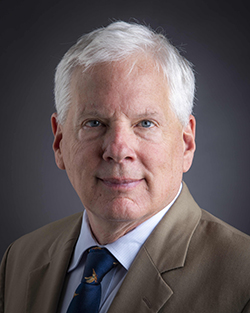Apr 13, 2021University of Florida’s J. Scott Angle shares clean water success story
Rick Roth doesn’t look to regulation as the guide for how to use fertilizer. He looks first to science.


He and his fellow Everglades Agricultural Area (EAA) farmers helped write one of Florida’s great environmental success stories. Regulations passed a generation ago called for a 25 percent reduction in phosphorus loads entering the Everglades from agricultural runoff in the EAA. Science helped Roth and his neighboring farmers reduce it by 57% on average over 25 years.
Scientists from the University of Florida’s Institute of Food and Agricultural Sciences (UF/IFAS) have researched and documented the effectiveness of best management practices (BMPs) in the EAA and elsewhere around the state.
We know we have to do more. SB 712, which passed during the 2020 Florida legislative session, calls for FDACS to develop research plans, in conjunction with UF/IFAS and other state universities and colleges, to evaluate existing BMPs to reduce nutrient runoff, recommend improvements and develop new BMPs.
FFVA has my pledge that UF/IFAS will perform as expected to update the science behind BMPs to meet growers’ 21st century needs.
I’ve redirected some of our already pandemic-squeezed resources to get started on nutrient studies on tomatoes and potatoes. In four sites throughout the state, plants are already in the ground, going from idea to field in just three months. We hope to be able to secure additional funding to continue studies and do the research that needs to be done.
Part of the reason we could move so quickly is our long history providing the science that underpins BMPs. Scientists from the UF/IFAS Everglades Research and Education Center have long worked with Roth Farms and other EAA farmers on developing and refining BMPs that led to the phosphorus reductions.
Roth’s leadership positions, including his current roles on the board of FFVA as well as member of the Florida House of Representatives, have given him a megaphone to tell the BMP success story.
That story includes a sophisticated cover cropping system that keeps his soil healthy, adds needed plant fiber, prevents erosion and lays the groundwork for the absorption of phosphorus in his cane fields during cash crop season.
EAA farmers have grown sugar cane and vegetables in rotation since 1962. Rick’s father, Ray Roth, grew rice as a cover crop beginning in the 1960s. Roth Farms harvested its first rice crop in 1980, beginning a 40-year history of a cane-to-vegetable-to-rice crop rotation.
The flooded rice fields hold water longer in the summer, allowing more time to filter out nutrients. An added benefit is that the flooded fields drowned grubs, eliminating the use of pesticides during subsequent cane planting.
With all this, he maintained and even improved his cane yield. Phosphorus BMPs are developed to reduce nutrient runoff without reducing yield and profit, Roth emphasized.
Roth was so enthusiastic about the benefits of growing rice that he co-founded the Florida Rice Council in 1983 and served as its president from 1995 until he stepped down to serve in the Florida Legislature in 2017. Grower members of the current Florida Rice Growers Association in the EAA annually levy a fee on rice production to fund rice research and Extension.
Samira Daroub has been doing that research on the effectiveness of BMPs for nearly two decades. And she says Roth is a great example of the FFVA-Rice Council-EAA-UF/IFAS-South Florida Water Management District research partnership. Roth allows EREC faculty to use acreage on his farm for experiments, and he allows them easy access to his property to measure and monitor results. For example, UF/IFAS delivers soil test results quickly enough so that they’re actionable.
Roth’s message to his fellow Florida growers is to make sure their own BMP plan is backed by research.
Daroub continues her research and Extension on the effectiveness of BMPs in the EAA. Meanwhile, it’s time for a new generation of BMP science statewide, and you’ll get it, starting with tomatoes and potatoes. UF/IFAS has a new crop of soil and water scientists, agronomists, plant breeders and more to help write the next chapter of a clean water success story.
– Scott Angle is the University of Florida’s Vice President for Agriculture and Natural Resources and leader of the UF Institute of Food and Agricultural Sciences (UF/IFAS).














